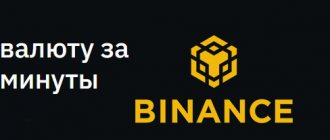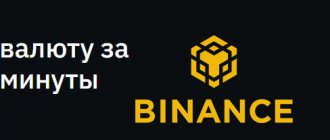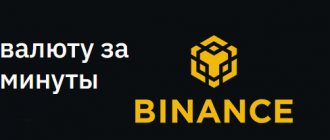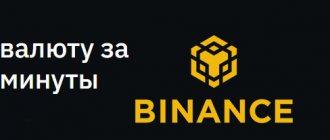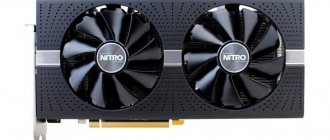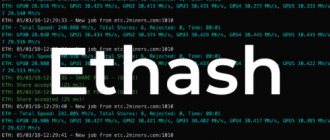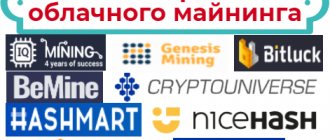Let us examine in detail what POSmining is and its differences from POWmining.
We’ll also look at what coins can be mined using POS mining and touch on mining on masternodes, and find out what the difference is between POS and running a masternode. POS and POW are technologies for finding a new block in the blockchain and distributing rewards; more precisely, algorithms for solving distributed consensus problems. How do these algorithms differ from each other?
PoW or proof of work , i.e. proof of work – the more powerful the miner’s computing equipment (the higher the hashrate), the greater the chance of finding a block and receiving a reward.
POS or proof of stake , i.e. proof of stake (or ownership) – the more coins a user has in their wallet, the more likely it is that this user will receive a reward for a new block.
With POS mining, there is no need to purchase expensive equipment or consume extra electricity. The calculations that a machine makes under PoW are meaningless and waste electricity. Equipment purchased for PoW mining may break down, become obsolete, and you will not be able to sell it at the same price as you bought it for. Coins purchased for POS mining are profitable on their own and may become more expensive over time. The advantages of proof of stake mining are obvious and it is not for nothing that Vitalik Buterin has already stated that Ethereum will be transferred from PoW to PoS in 2018.
Using PoS mining, for example, cryptocurrencies such as NXT, Gridcoin and BlackCoin are mined. It is also possible to combine PoW and PoS, as when mining Peercoin, PutinCoin, BitConnect or Emercoin coins. But most often PoW mining is combined with crypto mining using a masternode.
Ethereum Creator Promotes PoS Mining
Creator of Ethereum.
PoS is an acronym that stands for Proof of Stake and is translated as “proof of ownership.”
The Ethereum network itself is transitioning to Proof of Stake smoothly, first introducing hybrid schemes. Currently it is not yet possible to receive Ethereum using Proof of Stake. It is unknown when exactly Ethereum will switch to Proof of Stake, but approximately this will happen at the end of 2022 - beginning of 2019.
This is a short excerpt from an interview with Buterin, where he talks about the prospects of mining using the PoW algorithm.
Newcomers, when they see Vitalik for the first time, react more with surprise than with enthusiasm, because they do not know what this man has done for the blockchain community, and how important Ether is for the profits of many, many thousands of miners, traders and developers of new cryptocurrencies. In short, Vitalik sets a trend; his ideas will be implemented by more and more cryptocurrency creators. This means that it is worth studying PoS technology and preparing for the fact that in the next 5-7 years, mining on video cards, processors or ASICs will fade into the background, and perhaps even become obsolete and irrelevant. Smart contracts and the sha 256 algorithm will become popular.
POW vs PoS: which is better?
POW is well tested and used in many cryptocurrency projects.
DDoS attacks on the blockchain using this algorithm are not possible with today's computing technologies. However, high energy costs, negative environmental impacts, associated adverse media coverage, increasing centralization in mining, and low transaction throughput will likely make it unviable in the long term.
Communities are increasingly concerned about the high energy costs of Bitcoin mining.
The PoS algorithm provides a more scalable blockchain with higher transaction throughput, and several projects have already adopted it, such as the DASH cryptocurrency.
However, POS is also not perfect. For example, during staking, an attacker can also commit fraud and confirm incorrect transactions.
READ
Staking cryptocurrencies on exchanges - passive income, comparisons and reviews
The Ethereum project, as part of its planned transition to PoS, has developed the Casper protocol, under which such scammers will be punished by confiscation of cryptocurrencies, and depriving them of the ability to place bets ever again.
If the planned PoS implementation on a well-known protocol like Ethereum goes well, then the crypto community will likely have enough confidence in the PoS algorithm's ability to secure the network. This could tip the scales in favor of PoS, and only time will tell which one will be the blockchain consensus algorithm in the future.
Characteristics and essence of PoS mining
Ethereum.
The first coin to use this consensus algorithm was Peercoin (PPC), released in 2012. It has a hybrid consensus, meaning it also has PoW.
In simple words, with Proof-of-Stake mining, mining new coins means receiving a reward for the positive balance of your wallet.
Yes, you don’t need to do anything, just buy cryptocurrency and then receive dividends. This kind of mining is also called forging or minting.
Mining PoS coins has the following features:
- In most systems there is a minimum limit, for example, in Leocoin you need to have at least 1000 LEO in your wallet.
- The age of the coin is also taken into account. Age is the period of existence of a monetary unit in the wallet of its owner. In most systems, you need to store and not spend money for about 30 days.
- The reward is usually awarded for each block generated, there are several confirmations.
- Transaction fees are usually fixed.
The reward is either fixed (rarely) or proportional to the wallet balance.
Proof of stake technology for blockchain protection
The proof of stake technology was first announced in 2011 and its original purpose was to protect the network from hacking, for example during a 51% attack. The proof of stake technology copes with this task much better than proof of work. It is believed that if someone takes control of 51% of the total capacity of the system, then he will have complete control over the addition of blocks to the blockchain and will have the ability to change them at his discretion. Currently, about 80% of Bitcoin mining capacity is concentrated in China. There is a possibility that, for example, the Chinese government will want to take control of all farms.
Using POS technology, in order to take control of the entire network, you need to buy 51% of all coins. It is almost impossible to do this, since with such large purchases of the chosen cryptocurrency, its price on the exchange will increase hundreds of times. But even, theoretically, if someone buys 51% of the coins, it will not be profitable for him to do any fraud with it, since this will collapse the price and the attacker will suffer in the first place.
So the main goal of introducing POS was to protect the network. And the wide investment opportunities and energy savings became a pleasant bonus.
Difference from PoW and advantages
Comparison of consensus mechanisms.
There are several key differences between PoS and PoW.
| Comparison parameter | PoW | PoS |
| Condition for receiving the award | Work on your own computing power. | Storing money in your wallet. |
| Equipment | ASIC, processor or video card. | No specialized equipment required. |
The advantages of PoS mining include the following:
- There is no need to spend money on expensive motherboards, top-end video cards, ASICs, etc. A regular computer is enough.
- There is no need to allocate a separate room for the farm, assemble a rig, or design a frame for a mining farm.
- There are no high energy costs.
- The miner may not have special technical knowledge; the process of mining cryptocurrency is very simple.
PoS systems are well protected from attacks by intruders; without control over 51% of the total emission, it is impossible to influence the blockchain.
Lisk
Lisk allows you to write and run decentralized applications. JavaScript is used to create them, which significantly expands the user base compared to Ethereum, which uses a specific smart contract language.
The access rights verification system is a modified PoS, DPoS. Users pledge LSK to vote for delegates. 101 delegates are responsible for validating the block and collecting the reward. To become a delegate, you need to get a user's vote, so the delegate shares each reward with his voters. The reward can vary from 6 to 100% of the delegate's income. You can also apply to become a delegate; this is a paid option.
The PoS process for this cryptocurrency is a bit confusing. It goes through the Lisk Nano wallet. In Lisk Hub, select the “Delegates” column. Here the user can select those delegates that are suitable for protecting the Lisk network.
Each voting round costs 1 LSK. During each round, 33 delegates can be voted for, with a total of 101 votes cast. The value of each vote is determined by the total amount of LSK tokens held in a particular wallet, this is called "vote weight". After setting once, the selection is saved.
While there is technically no minimum amount of Lisk required to participate, voting costs 4 LSK, so it is recommended to have at least 200, preferably over 500 LSK, to earn a decent income.
That is, to receive income from this PoS cryptocurrency, you need to take into account two factors:
- selection of a delegate (each has its own conditions for remuneration and payment time),
- “vote weight”, which depends on the coins pledged.
What coins can be mined only by POS mining?
ReddCoin.
Website Leocoin.org
Among the most profitable cryptocurrencies on PoS are the following.
| Coin | Ticker | Declared profitability, % per annum | Exchange quantity for purchase or exchange | Approximate market capitalization | Approximate exchange rate to ruble |
| ReddCoin | RDD | 5% | 10 | 8 billion rub. | 0.5-0.8 rub. |
| LEOcoin | LEO | 20% | 4 | RUB 1.4 billion | 12-15 r. |
| ClubCoin | CLUB | 20% | 3 | No data | 29-31 r. |
| NovaCoin | NVC | 100% | 6 | RUB 449 billion | 220-223 rub. |
It is also useful for investors to read the official website of the developers before investing money in their projects. You can also download the wallet on the official website.
| Cryptocurrency | Website |
| ReddCoin | reddcoin.com |
| LEOcoin | leocoin.org |
| ClubCoin | clubcoin.co |
| NovaCoin | novacoin.org |
Since PoS mining begins with the purchase of coins, it is worth understanding the exchanges in more detail.
ReddCoin can be purchased on the following trading platforms:
- Bittrex;
- Upbit;
- Cryptopia;
- Litebit.eu;
- Vebitcoin;
- YoBit;
- Bluetrade;
- TradeSatoshi;
- Bisq;
- Coinhouse.
LEOcoin is traded on the following exchanges:
- Livecoin;
- Bit-Z;
- LEOxChange;
- C-CEX.
Exchange LEOxChange.
ClubCoin is sold on the following trading platforms:
- Bittrex;
- YoBit;
- Litebit.eu.
You can buy NovaCoin on these exchanges:
- Livecoin;
- YoBit;
- C-CEX;
- WEX;
- Bluetrade;
- Cryptopia.
Considering the not very high rate of RDD, LEO, CLUB and NVC, you can start earning money with an investment of about 30,000 rubles.
NEO
NEO is a PoS coin that works with smart contracts. This makes it, like Ethereum, a platform on which other applications and ICOs can be launched. NEO and the associated GAS coin at one time found their way into the portfolios of many investors, since the project is being developed in China, which means that if cryptocurrencies are popularized, they will occupy the Chinese market.
Any NEO holder can earn GAS. This token is automatically credited if the coins are in the official NEO wallet, Binance and KuCoin.
Annual interest rates are around 4-6%, paid in GAS. They are awarded based on the amount of NEO in the billing period. The minimum amount to be credited is 1 NEO.
NEO is unique in that it cannot be divided into its component parts (for example, like Bitcoin's Satoshi). NEO represents a share of ownership in the blockchain, and GAS is used as fuel, that is, it gives the right to operate on the network.
How to start PoS mining, types of earnings
Cloud mining.
There are several types of PoS mining:
- Solo, that is, working alone, turning on your computer.
- Cryptocurrency mining through a pool, cloud mining. Several miners pool their capital to get more rewards and then distribute them among everyone. If you wish, you can do solo mining in cloud data centers, but this does not provide any advantages in PoS.
- Receiving coins through so-called faucets or Faucet services. Everything is very simple here, you need to open the site and enter the captcha from time to time. The faucet will credit a certain amount of coins to the Faucet wallet linked to the site for free. It is also important to read eobot login.
The downside of the latter method is that you can earn extremely little money from faucets; it’s simply not worth the time spent.
Solo mining is carried out according to the following principle:
- You need to download the wallet from the official website.
- Buy cryptocurrency on any of the mentioned exchanges.
- Wait a day for synchronization.
- Download the mining program and run the batch file (run.bat file).
- Enter your wallet number in the body file.
- Just keep the coins in your account for the time specified by the developers.
When mining through a pool, the difference is that you need to write down the pool number in the body file and register in the pool itself.
Shared Mining Pools: How They Work
Communities of miners pooling their assets to generate increased profits. Through the use of cloud services and capabilities, the technology allows for additional insurance for users and additional protection in the event of bankruptcy.
The general principle is the following: you invest your assets in a single community wallet. Based on the collected volume, rewards are credited to the account, which are then distributed among all participants strictly in accordance with the amount of investment at the initial stage.
https://altcoinlog.com
SUBSCRIBE TO OUR YOUTUBE CHANNEL TO BE UPDATED.
Cloud PoS via Poswallet
Home page poswallet.com.
The Poswallet wallet was created for cryptocurrencies with the PoS algorithm. It is not official, and no one can guarantee its 100% reliability, just like the Bucksman exchanger.
Interface.
The wallet combines 2 functions:
- Online cryptocurrency storage, supports more than 40 altcoins.
- Earning money from taps. Moreover, for some reason it is called “pool”, although there is no pool in the traditional sense.
When using taps, you need to consider the following nuances:
- Green taps are active.
- Red ones are removed.
- Purple ones potentially work.
- One tap can be used once every 24 hours.
- Within 15 minutes you can open no more than 3 taps.
Service commission – 1%. It is important to be active regularly; if you do not update your wallet on time, it may be deleted or at least deprived of rewards. You can withdraw money to your personal wallet or to exchanges for selling and exchanging cryptocurrency. There is an internal exchange where you can buy PoSW tokens.
After watching this interesting video review, you can understand a little more about Poswallet.
What is coin age selection?
The method for choosing the age of a coin is based not only on the principle of equality, but also on the principle of fairness. Let's take a closer look at this. This method selects tokens based on how long ago they were staked. The age of the coin is determined by multiplying the number of days of the stake by the number of coins of the stake. You might think that in this case the choice would necessarily be in favor of staking nodes that have held tokens since the creation of currencies. But it's not that simple. Once a node creates a block, the age of the coin is invalidated. You will need to wait some time in order to participate in the selection again. This method is another way to prevent nodes with large bids from having an advantage over nodes with small bids.
Of course, the choice of validator depends not only on principles such as choosing a larger bet, randomizing blocks or choosing the age of coins. Large crypto projects also have their own rules and methods to determine which node will create a block. And then comes the most interesting part.
Profitability
Profit.
Coins that have a more or less high exchange rate impose a limit on PoS mining in the form of a minimum balance on the wallet for earnings. By doing this, they attract more serious investors and increase capitalization. The disadvantage of working with such a cryptocurrency, for example with LEO, is that you first have to spend a certain amount of your money, and then this investment begins to pay off. And if the exchange rate drops, then you can go into negative territory.
Cryptocurrencies, which have a very low exchange rate, allow everyone to earn money, but they won’t be able to make big money.
From this video you can learn about the most effective and secret methods of PoS mining, which are used by successful miners who manage to make a profit.
And this video will help you get a more realistic idea of the profitability of PoS mining; the miner summarizes the results of the experiment.
In general, we can conclude that the profit from PoS mining will be small, but stable, if you choose the cryptocurrency well and sell it on time or withdraw it to low-volatility assets.
Amount of income
The real profit from using POS protocols for mining depends on the type of cryptocurrency and ranges from 0.5 to 20%.
This protocol has a significant drawback - the constantly increasing volume of coins (emission is unlimited). To avoid inflation, a systematic increase in the complexity of the algorithms for calculating the hash required to generate new blocks is required. A decrease in block generation entails a decrease in production. But until the number of blocks reaches the limit, PoS mining will generate income.
VeChain
The latest update to VeChain Thor aims to make the platform a decentralized application platform for business, the second Ethereum. The two tokens involved in this process are VET, the native token of VeChain, and THOR, the THOR Power token. They work according to the same logic as NEO and GAS.
VET holders can generate THOR by holding tokens in a wallet. There is no VET minimum for this, and some exchanges also support the generation of new tokens. The net reward is small, around 1.68%, but does not require any effort. VeChain also makes it possible to launch a masternode with a collateral from 10,000 VET to 250,000 VET (Strength, Thunder and Mjolnir).
ARK
The Ark project aims to connect disparate blockchains using SmartBridge technology. It acts as a smart contract that can be implemented on chains with completely different protocols, such as Bitcoin and Ethereum.
Ark uses a delegated proof-of-stake system, just like Lisk. Users do not bid directly. ARK tokens are used to vote for 51 delegates, who then share the rewards with their voters. The average payout to a voter is 10% of ARK earned, but some delegates suggest giving voters 90%.
Unlike Lisk, on the ARK network one wallet can only vote for one delegate at a time, the tax per vote is 1 Ark. This is to prevent centralization or corruption of the voting system. For example, if a potential voter has 1 million ARC, he can supply the entire million tokens for only one delegate. To vote for two, you need to create two wallets, and the total weight of the vote is reduced.
Dash
Dash is not a pure POS coin, but uses a masternode system. We wrote a separate article about this. But from an investment point of view, it's about the same. Running a masternode for Dash at one time cost half a million dollars. Now the rate has fallen: to launch a node you need 1000 DASH, or 12.5 billion rubles. This is not suitable for the average user who is looking for passive income, but may be of interest to large investors. The return on investment is at the level of 6.5-8.5%:
